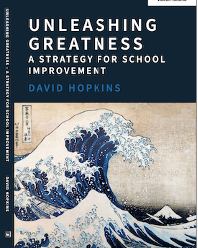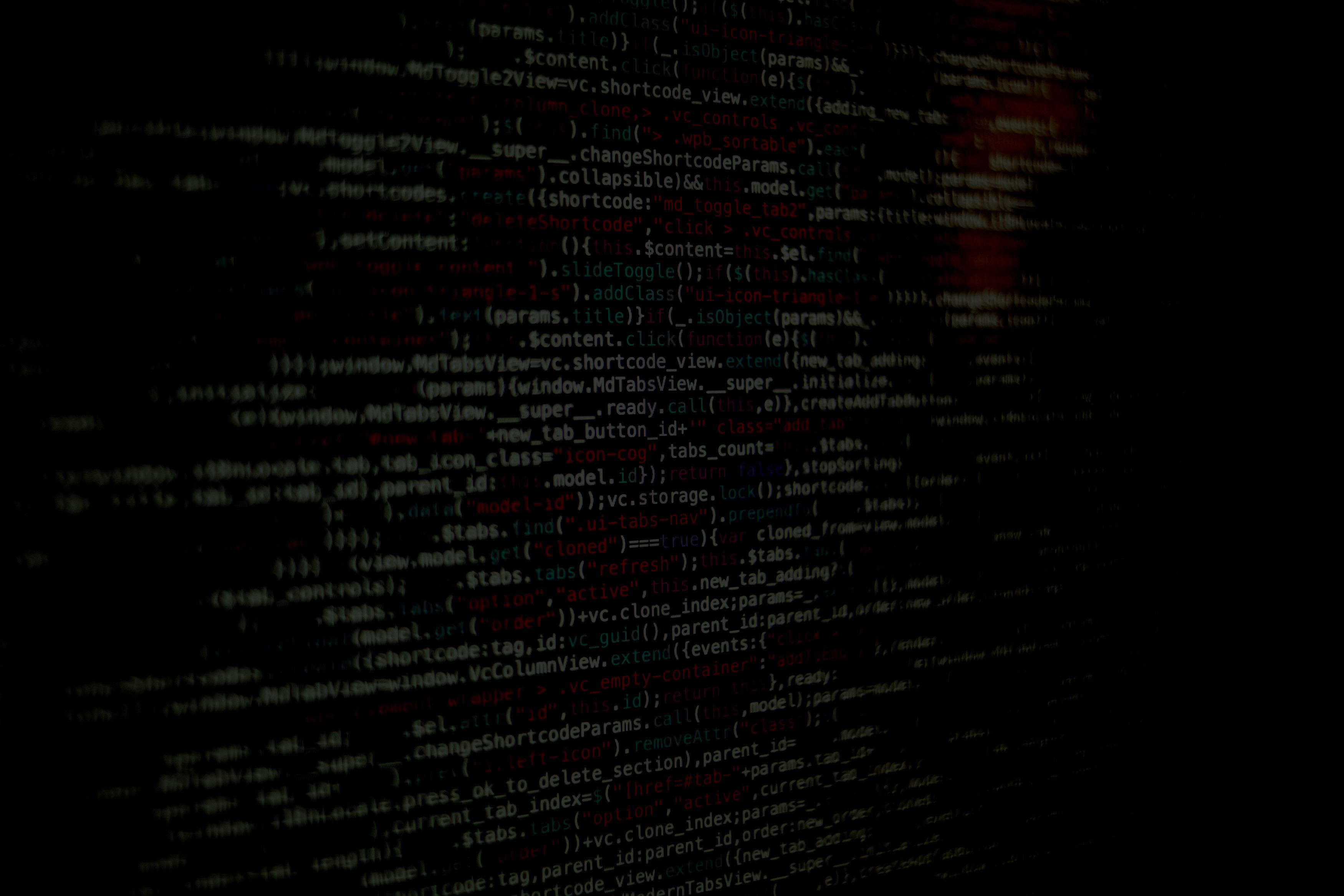Unleashing Greatness
A personal epilogue
Posted by David Hopkins on May 14, 2024
Unleashing Greatness – A strategy for School Improvement
David Hopkins
To be published by John Catt Educational
Summer 2024

A PERSONAL EPILOGUE – “It is never too late to have a happy childhood.”
It is always a struggle to know how to conclude a book like this. Although intended to be user friendly, we have traversed some complex terrain in these eight chapters. As I re-read the text for a last time before sending the files to the publisher, I have been asking myself whether I have really outlined a sufficiently practical, pragmatic and conceptual framework that leads to the realisation of moral purpose and Unleashing Greatness.
As I equivocate and as self-doubt begins to enter, I recall a time well over forty years ago when I was a junior lecturer at Simon Fraser University in Vancouver the place where I had just completed my PhD. Together with my colleague Peter Norman, we were leading a workshop for our Faculty Associates and teacher training colleagues. I had just read Tom Robbins’ third novel Still Life with Woodpecker (Robbins 1980). The novel is ‘sort of a love story that takes place inside a pack of Camel cigarettes’. The narrative is quintessential Robbins - as zany, dazzling, and insightful as that description implies. I based my keynote around the themes of the book and received a rapturous reception which of course was all due to Robbins rather than myself. I recalled that moment the other evening as I was wrestling with how to finish the book whilst looking at the stars when taking Echo, our rescued greyhound for his midnight walk.
The overarching theme of Still Life with Woodpecker is how to make love stay. Robbins maintains that it is easy to fall in love, the hard part is making it last. As he leads his reader through his kaleidoscopic and unpredictable narrative, he comments on his quest regularly, but quite frankly without adding much value. In concluding the book, he writes this:
The romance of new love, the romance of solitude, the romance of objecthood, the romance of ancient pyramids and distant stars are means of making contact with the mystery (his synonym for love). When it comes to perpetuating it however, I got no advice. But I can and will remind you of two of the most important facts I know:
1. Everything is part of it.
2. It’s never too late to have a happy childhood.
So, what has this whimsy to do with school improvement and Unleashing Greatness? It is simple really, all great educators are lifelong learners themselves and have a love affair with learning. More specifically:
1. Everything counts – School improvement strategies need to be comprehensive, mutually supportive and all the drivers need to align. This is what I have tried to argue in the preceding chapters – Part Two of the book is entitled All the Moving Parts – because all the drivers need to move synchronously within a coherent framework.
2. It’s never too late to have a happy childhood – This is the joy, and yes, it is joy, one feels when one knows we are making a positive difference to the learning and lives of the students under our care and the colleagues that we work and collaborate with. This is the energy generated by intrinsic motivation and the fulfilment of moral purpose.
Let me embellish and expand on this a little.
Everything Counts – At the risk of repeating the eight steps let me emphasise the four features of those schools that in my experience have unleashed greatness. The important point is that it is not just one or two or three of these elements, it is all four in concert. Unleashing Greatness is not an a la carte menu. All of the schools who have provided cameos or case studies for this book have integrated these elements and adapted them to their particular context. Similarly, earlier in this chapter when describing the Diamond of Reform framework for educational systems, all four drivers linked together and were adapted to context through system leadership. Importantly, all had the potential to build capacity as well as raise standards. So, these four features are:
· Moral Purpose, Narrative and Strategic Action. All those schools that have unleashed greatness have a strong and pervasive narrative comprised of both moral purpose and strategic action which, as we have already noted, are the opposite sides of the same coin. One is aware of this immediately one enters the school and it becomes increasingly apparent as one wanders the corridors and read the displays on the walls. On entering the classrooms, which are uniformly calm and orderly, the students are fully engaged with their tasks individually or in groups and seem happy. The narrative is omnipresent and seems to scaffold the behaviour and actions of both students and teachers.
· Taking the Instructional Core very seriously. Look carefully at teacher actions in the classroom. They are coherent and purposeful, and the overarching framework is similar classroom to classroom. The teachers link presentation to activity and task seamlessly. Students learning is clearly scaffolded and consequently their independence grows. Teachers have embedded within their professional repertoires a variety of specifications of practice that they use as appropriate. In our terms, the Theories of Action are widely used and discussed.
· Professional Learning and Peer Coaching. It is clear that on talking with teachers that a particular form of professional learning is commonplace in the school. It is regarded as being both an entitlement and expectation of being a member of staff there. It is also apparent that the workshop – workplace distinction is fully observed and implemented. Collaborative workshops are about extending repertoire and developing skill. Peer coaching is ubiquitous but not cumbersome or bureaucratic. These encounters are informed by protocols and the follow up conversations are appreciative rather than judgemental. There is also evidence of teacher’s action research projects around the school and in the staffroom, and the learning from the courses that individual colleagues have been on are widely disseminated.
· Instructional Leadership. None of this of course happens by accident. The influence of leadership is clearly evident and distributed. It is a style of leadership that improves teaching and learning indirectly but powerfully through their influence on staff motivation, by developing the narrative and generating an infrastructure that promotes powerful learning for both students and staff. Leaders are evidently conscious of the importance of supporting both development and maintenance functions, and the focus on the non-negotiables is clearly seen.
This is only a snapshot, but the characterisation is not fanciful, it is pervasive and evidenced. As I have just said, these features are well seen in the schools that have provided cameos or case studies for this book. This also supports the contention that in school improvement and Unleashing Greatness, everything counts.
Happy Childhood – I used the word ‘joy’ earlier to apply to Robbin’s notion of having a ‘happy childhood’ to education. Let me try and express it in a different way. Throughout my professional life I have fortunately, and more often than not, had positive feelings when entering the workplace. I was looking forward to the day and the interactions to come. Usually, the workday ended feeling tired but content and satisfied at a job (reasonably) well done. On a few occasions when I have felt the opposite – there was a sinking feeling on arrival with a day of drudgery to follow. These emotions are directly related to the workplace culture of the institutions I was entering. Generating a positive culture is the task of leadership. As Michael Fullan once said to me, “the only thing of real importance that leaders do is to shape and manage culture”. Where the workplace culture is positive then colleagues feel worthwhile, effective - even joyful.
The problem however is that culture manifests itself experientially rather than conceptually and strategically. It is a slippery construct to define, especially in education. As noted in Chapter 7, some time ago, we developed a heuristic research tool to measure culture (Ainscow, Hargreaves and Hopkins 1995). This however only indirectly provided us with a means to change culture.
A more direct way of generating a positive culture is provided by Dan Pink’s specification on Intrinsic Motivation, as outlined in his book – Drive (Pink 2011). As we saw in Chapter 6, to build an intrinsically motivated culture, you need to focus on three key factors (Mind Tools 2023):
1. Autonomy – people are trusted and encouraged to take ownership of their own work and skill development.
2. Mastery – people see no limits to their potential and are given the tools that they need to continue to improve their skills.
3. Purpose – people are encouraged to use their skills to achieve a "greater" moral purpose.
When an infrastructure is developed that generates autonomy, mastery and purpose, a positive culture ensues, and colleagues have a ‘happy childhood’ in the sense of a positive or even joyful work life. Once again this does not happen by accident when the workplace culture is positive it is the consequence of purposeful action – as we have discussed throughout this book.
Why is your work so hard? Unfortunately an increasing number of teachers and leaders who I meet or read about are not having a ‘happy childhood’in their classrooms or schools. For whatever reason, the schools that they work in have failed to unleash greatness and so their work lives are characterised by pressure, stress, and surveillance. A few years ago, I was so concerned about this that I informally researched the phenomena and talked to a range of teachers and leaders about their work lives. The common response was that “my work is so hard”. So, I talked to more and more teachers asking them initially – ‘Why is your work so hard?’ These are the conclusions that I drew from those conversations:
• Political imperatives rarely match accurate system diagnosis.
• History of weak implementation means that system foundations are not uniformly in place nor are being built on.
• The narrative of reform although evident at particular points has not been sustained over time.
• Because of its antecedents, teaching has struggled to establish a professional culture built on diagnosis, specifications of practice, collaboration, and research.
• Bureaucratic rather than systemic organisational structures and cultures continue to dominate.
When I test these hypotheses out with teachers and leaders in my seminars or at workshops and conferences, I get an immediate recognition - “Oh that is why I feel that way”. I have reflected much on this and have concluded that these colleagues feel this way because they work within a macro culture or hegemony that is driven by technical, bureaucratic and instrumental ways of working.
Critical Theory. This is where the narrative of this book comes full circle. In the Coda to the first chapter, I introduced the reader to Jurgen Habermas’s ‘tri-paradigm framework where he identified, contrasted, and elaborated three specific ways of learning– the technical, practical and critical. I threatened the reader that I would return to this discussion at the end of the book, and now is the time.
Colleagues feel that their work is hard because, a) it is; and b) because they are trapped within the technical / instrumental paradigm to which they see no escape. This is Max Weber’s ‘dark night of the soul’. The argument of this book is that school and system reform should eschew the technical paradigm that Is short term, and prizes accountability, top-down bureaucratic policy options and narrow outcome measures. Instead, teachers and leaders should embrace, and argue for, an approach to education that is informed by the values and actions of the Critical paradigm. The emphasis here as we saw in Chapter 1 and continued to argue for throughout the book is on an way of working that is:
|
Critical - Transformation - Critique and liberation
|
Emancipatory - Critical knowing that combines reflection and action |
Is authentic, with an emphasis on student learning, intervention and empowerment |
I have attempted in the book to outline a school improvement strategy that does just this. As I type these words I am once again reminded of the wisdom of Tom Robbins. In Still Life with Woodpecker, he memorably distinguishes between criminals and outlaws (Robbins 1980). To paraphrase him a little:
The difference between a criminal and an outlaw is that while criminals frequently are victims, outlaws never are. Indeed, the first step toward becoming a true outlaw is the refusal to be victimized. All people who live subject to other people's laws are victims. … We outlaws, however, live beyond the law. … When we succeed, we raise the exhilaration content of the universe. We even raise it a little bit when we fail.
This is not to advocate lawlessness, but to define a direction of travel, and a set of action oriented values that condition our work lives. As I have reread the manuscript, I have become acutely aware that what I am advocating is not the conventional policy wisdom in England at least. I feel very much that I too am an Outlaw – and revel in it!
Unleashing Greatness is the antidote to the problem of why our work is so hard. Our work is so hard, simply because we live within and tacitly accept the norms of the instrumental paradigm. The argument of this book is that we ‘live beyond the law’ by eschewing the instrumental paradigm and it’s control oriented and technical orthodoxy and embrace the Critical paradigm. The values and behaviours that prize critical knowing that combines reflection and action, with an emphasis on student learning, intervention and empowerment will surely Unleash Greatness.
What are the protocols and strategies that enable us to do this? Unfortunately, the evidence base is still not as strong as it could be, but let me leave you with some quotations from a research study that explored the development of a leadership framework based on Habermas’ theory of human interests (Quong 2003):
Emancipatory school leaders, through self-reflection and critique, transcend any interest in control and mutual understanding respectively and incorporate them within an interest in emancipation. A critical school leader, it is suggested, would empower teachers and join with them in a critique of curricula, to expose power relations, tradition, habit, custom, and political restraints. In school leadership the emancipatory (critical) cognitive interest is characterised by:
· Critical self-reflective and educative leadership.
· A need to question purpose and outcomes in order to demystify a direction or policy.
· A concern to discover barriers or constraints that restrict people’s attainment or cause inequity.
Emancipatory, critical learning enables school leaders to identify the assumptions and values that constrain the way they (and their staff) think, feel and act. In this domain school leaders address problem-solving by adopting a form of critical self-reflection which may transform their ways of thinking, feeling and acting. Emancipatory learning is a political act. It helps school leaders to separate out ‘truth’ from ‘ideology’, and understand how power in social, cultural and political contexts have shaped their thinking. It helps them to understand how others may try to shape their thinking for them, and reveals hidden domination, restrictions and barriers in schools.
So as have said the argument has come full circle. Unleashing Greatness is committed to working in the Critical paradigm. This is the only way that Unleashing Greatness will be realised. All other approaches may achieve initial success but will inevitably regress to the mean.
The Good Society. The argument however is greater than this. Unleashing Greatness is of course simply about school improvement, but I suggest it aspires to more. As a young trainee teacher, I read carefully Basil Bernstein’s writings that ‘Education cannot Compensate for Society’ (Bernstein 1970). I appreciated his analysis at the time and still do. Nowadays however, I am more optimistic. If we deliver on the values and actions of Unleashing Greatness, then a I believe that we are also making a contribution to realising the good society.
So, I conclude this final Coda to Unleashing Greatness by reflecting on Amitai Etzioni’s (2000) inspirational exhortation contained in the Third Way.
We aspire to a society that is not merely civil but is good. A good society is one in which people treat one another as ends in themselves. And not merely as instruments; …
The good society is an ideal. While we may never quite reach it, it guides our endeavours and we measure our progress by it.
The vision of a good society is a tableau on which we project our aspirations, not a full checklist of all that deserves our dedication. And the vision is often reformulated as the world around us changes, and as we change. Moreover, it points to different steps that different societies best undertake, depending on their place on the Third Way.
The Third Way is a road that leads us toward the good society. However, it should be acknowledged at the outset that the Third Way is indeed fuzzy at the edges, not fully etched. But this is one of the main virtues of this approach: it points to the directions that we ought to follow but is neither doctrinaire nor a rigid ideological system.
Comments
Leave a comment.
Leave a comment.



 )
)